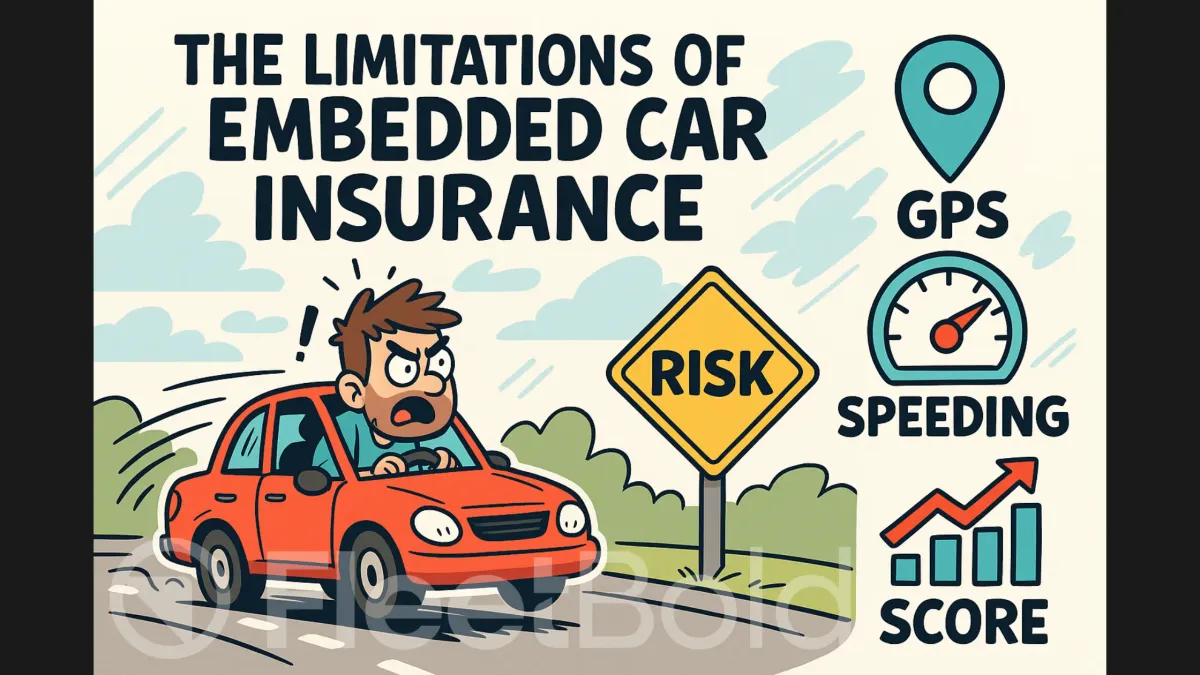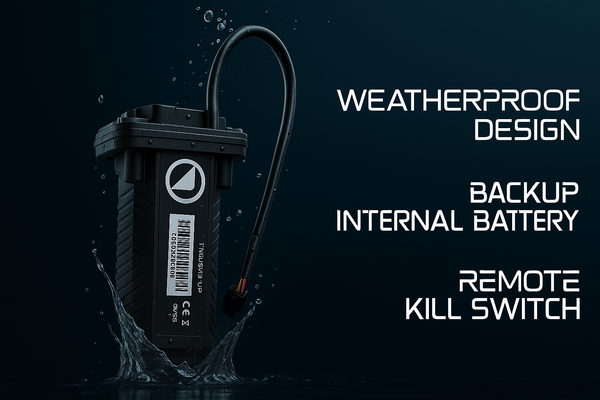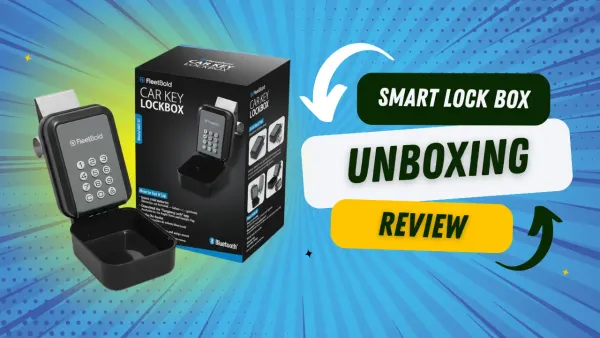Why Risk Scoring Through Telemetry Is the Future of Embedded Insurance
Embedded insurers are losing ground not because of rising claims, but because they fail to predict risk. Telemetry can change that. FleetBold is building a smarter way to rate guest behavior—and the entire rental ecosystem benefits.

The Formula the Car Rental Industry Still Hasn’t Solved: Why Risk Scoring Through Telemetry Is the Future of Embedded Insurance
In 2025, it’s hard to believe that embedded insurance providers and carsharing platforms still rely on risk models based on outdated, generalized assumptions. One of the most glaring examples? The belief that simply being “over 25 years old” equates to lower risk. In a world where we have live telemetric access to a guest’s actual driving behavior, this one-size-fits-all mindset is not just inefficient it’s actively contributing to losses.
The core problem lies in the fact that most embedded insurance models are reactive. When a guest causes damage, files a claim, or disappears with a vehicle, action is taken. But by then, it’s already too late. What follows is a predictable cycle: the account gets closed, the guest opens a new one, and the platform starts over blind to the behavioral history that led to the issue in the first place.
This isn't just an occasional loophole; it’s a systemic vulnerability. And worse, it’s a vulnerability that could be prevented.
The Data Is Already Here—We’re Just Not Using It
Modern telemetric systems have made it possible to understand how a person drives in real time, down to extremely detailed behavioral patterns. Yet most embedded insurance providers and rental platforms continue using GPS only for basic location tracking primarily to recover a car after it’s been stolen or abandoned.
That mindset is deeply flawed. Telemetry is not a recovery tool. It’s a predictive engine.
At FleetBold, we’ve built a scoring system that uses real-time behavioral inputs to assign a dynamic risk profile to each guest. Not based on past claims. Not based on arbitrary rules. Based on how they drive.
Our platform monitors behavioral markers that are highly correlated with accident risk, such as:
- Repeated speeding beyond the legal threshold
- Hard acceleration and sudden braking patterns
- Frequent nighttime driving in high-risk windows
- Unusually high mileage over short timeframes
- Driving styles that trigger G-force alerts (for Performance models)
This isn’t about surveillance. It’s about clarity. Behavior leaves patterns, and those patterns can and should inform how a guest is rated and priced.
What FleetBold’s Risk Scoring Actually Solves
The purpose of our scoring system isn’t to block guests it’s to enable intelligent pricing, prevention, and operational protection.
If a guest demonstrates a risky pattern of driving, the system flags that behavior and adjusts their profile accordingly. Embedded insurance providers can then factor that score into rate calculations, while hosts can make more informed decisions about accepting or rejecting a booking.
Now imagine the inverse: a guest drives cautiously, keeps trips short, never speeds, and consistently handles the vehicle with care. That guest deserves lower insurance rates, faster approvals, and potentially even booking rewards.
Let’s compare two real-world profiles:
Guest A:
- Drives during daytime only
- Stays under the speed limit
- Keeps trips under 30 miles per day
- Never triggers acceleration or braking events
Guest B:
- Frequently speeds 20–30% over the limit
- Accelerates and brakes aggressively
- Racks up 200+ miles daily
- Drives mostly at night
Should both pay the same insurance rate? Should both be evaluated through the same lens? The answer is obvious and yet in most embedded insurance models, the distinction doesn’t exist. That’s not only unfair to the responsible driver—it’s economically reckless for insurers and platforms alike.
Why Legacy Filters Like “Over 25” No Longer Work
The industry’s overreliance on arbitrary age or account-based filters is a relic of the past. These models were created in an era where data simply didn’t exist. Today, platforms like Turo have the power to integrate real-time driving feedback directly into their decision-making systems.
More importantly, guests are no longer anonymous one-time users. Even first-time renters leave a data trail miles driven, vehicle strain, energy consumption, braking frequency. And as the number of trips grows, the data becomes even more useful, revealing consistent driving behaviors over time.
Yet embedded insurance providers continue to treat each guest as a blank slate unless a formal claim is made. They ignore the warnings, miss the trends, and absorb the consequences.
Embedded Insurance Is Failing Not Because of Claims But Because of the Lack of Prevention
Some embedded insurance providers have already exited the rental and carsharing market. Not necessarily because claims were unmanageable, but because their pricing models weren’t grounded in behavioral reality. They relied on flat rates, outdated filters, and post-incident adjustments instead of risk prediction and behavioral scoring.
Worse still, many require GPS devices for basic asset recovery but fail to tap into the far more valuable telemetry those same devices can provide. In 2025, using GPS just to locate a missing car is like using an iPhone as a paperweight. You’re ignoring 95% of the tool’s actual value.
FleetBold’s system is different. We provide hosts and insurers with actual behavioral intelligence: How the guest drives, how often they push limits, how they treat the vehicle when no one’s watching. And more importantly, we make that data actionable.
How Telemetric Risk Scoring Strengthens the Entire Ecosystem
If embedded insurers adopt behavior-based pricing models powered by systems like FleetBold, the benefits are immediate and long-term:
- Hosts gain better protection against problematic guests
- Insurers reduce loss ratios and operational exposure
- Safe guests are rewarded with lower rates and higher trust
- Repeat business increases as responsible guests are encouraged to return
- The rental platform becomes more reliable and less vulnerable to abuse
This creates a healthy, self-regulating rental cycle. Irresponsible guests don’t disappear they just pay more, making their rentals less frequent and more reflective of the risk they bring. Meanwhile, responsible guests rent more often, save more, and help protect the platform’s reputation and bottom line.
In a market where vehicle supply, insurance availability, and consumer trust are all under pressure, this kind of balance is not optional it’s essential.
Conclusion: This Industry Doesn’t Have a Claim Problem. It Has a Blind Spot.
It’s time to stop treating telematics as an emergency tool and start using it as a foundation for smarter insurance and rental decision-making. Claims will never disappear entirely but they can be reduced, predicted, and priced accurately.
The “25 and older” rule has served its time. It no longer reflects the reality of modern driving behavior or the data now available. Real-time telemetry is here. Scoring systems like FleetBold’s are already proving their value. The only thing missing is for insurers and platforms to connect the data to their pricing logic.
The future of embedded insurance doesn’t lie in bigger claim departments it lies in smarter risk prediction. Those who recognize this shift will lead. Those who don’t will continue chasing problems they could have seen coming miles away.





